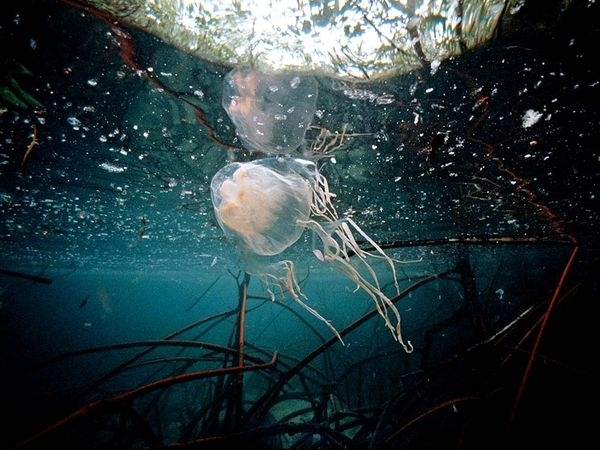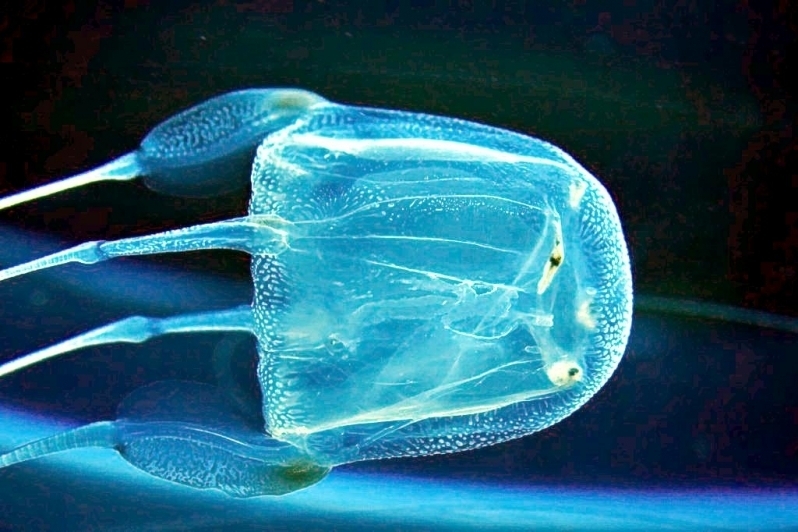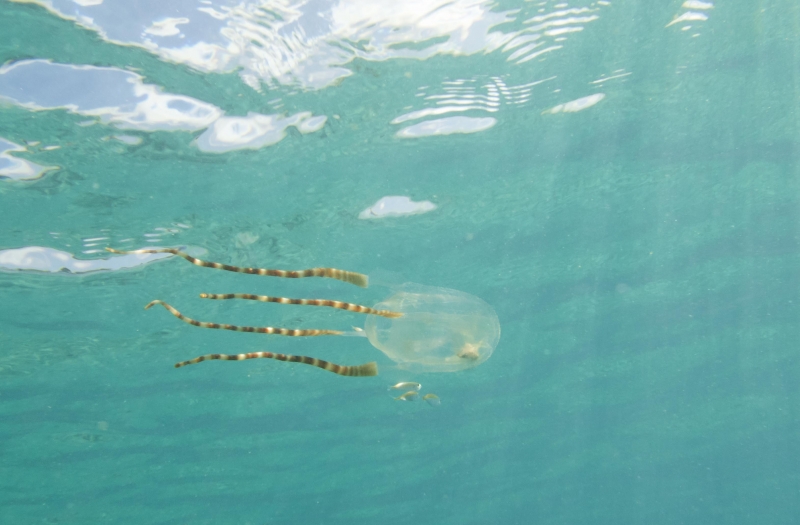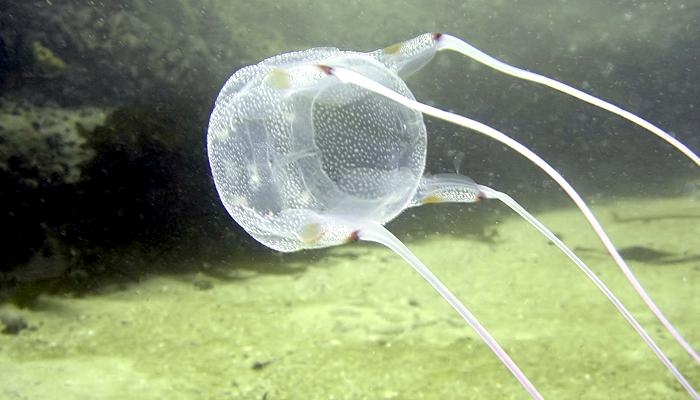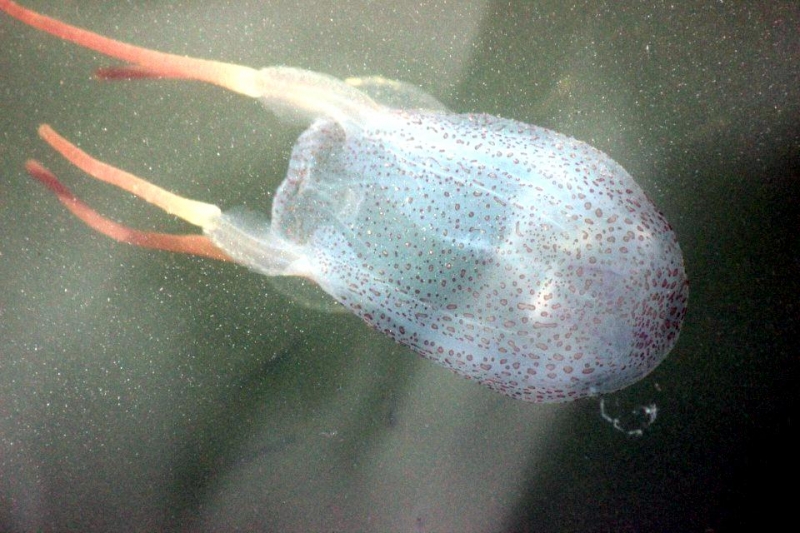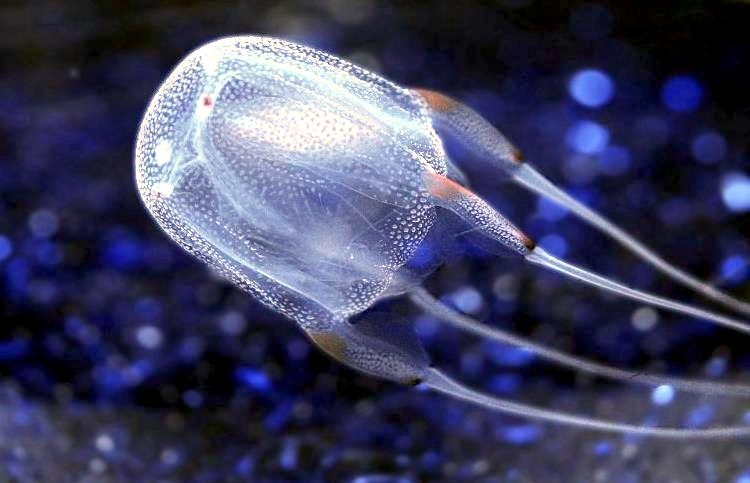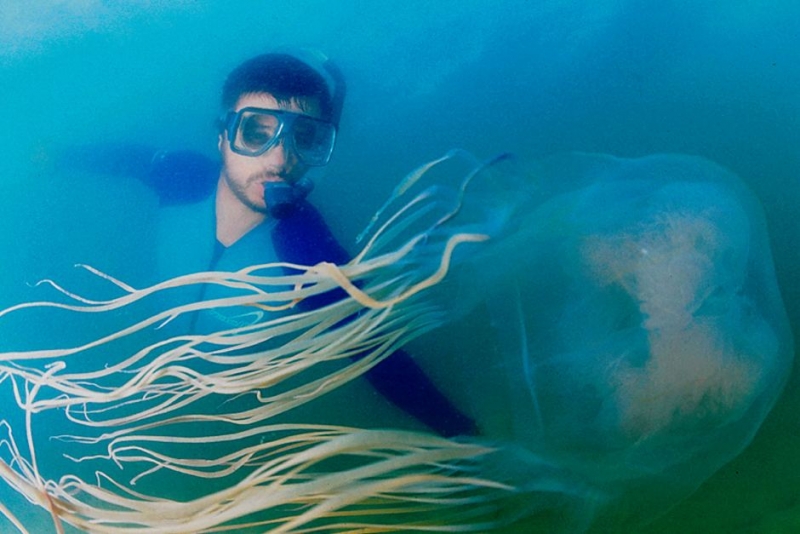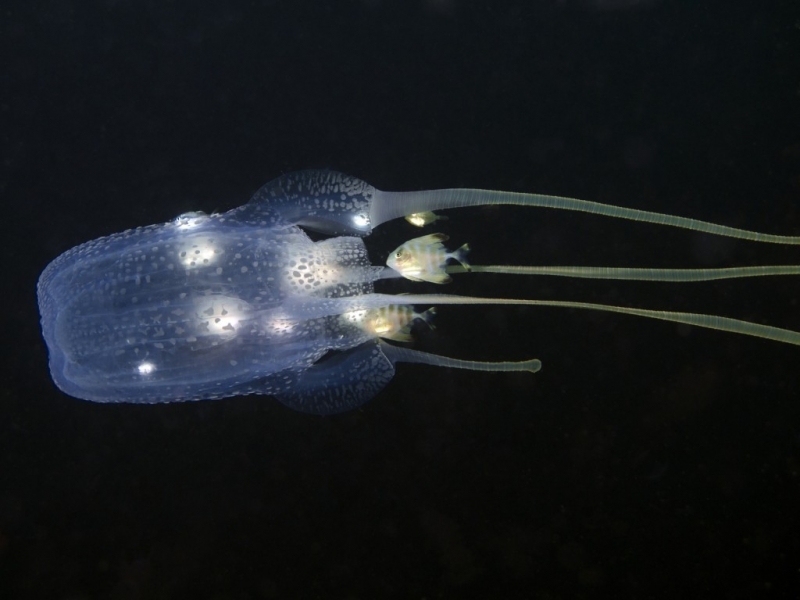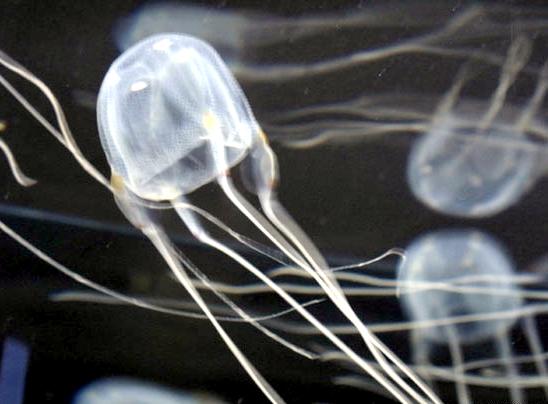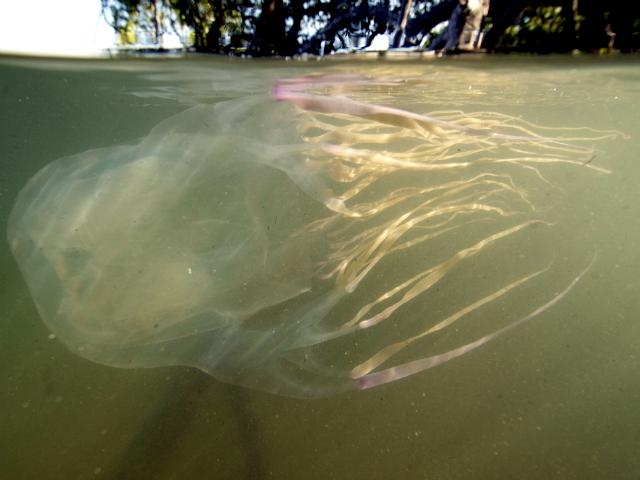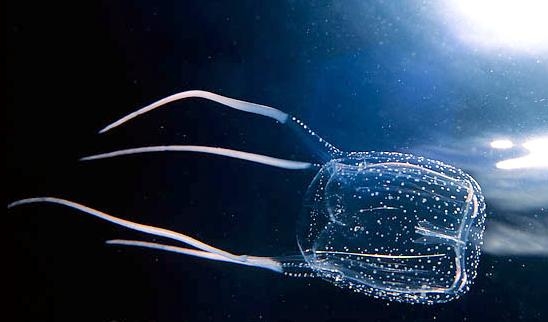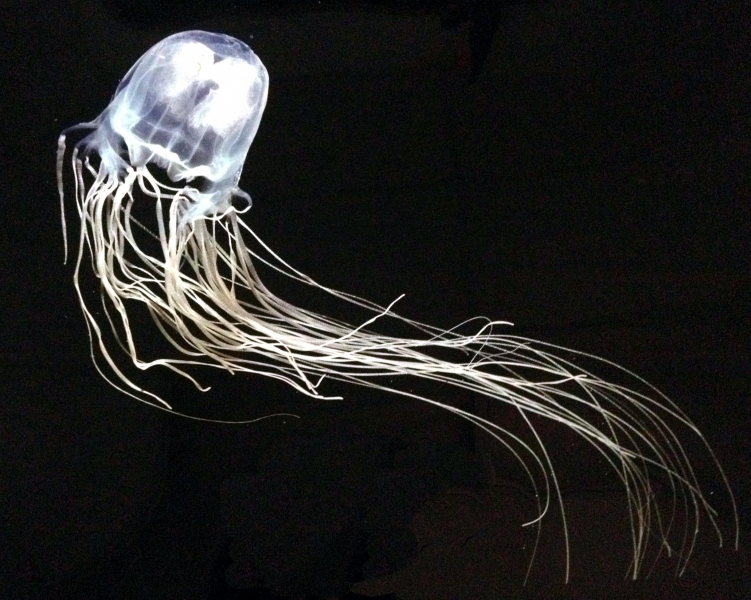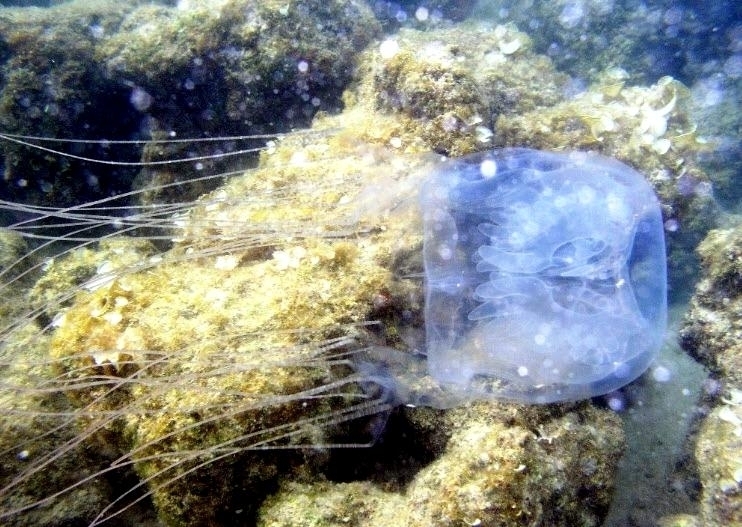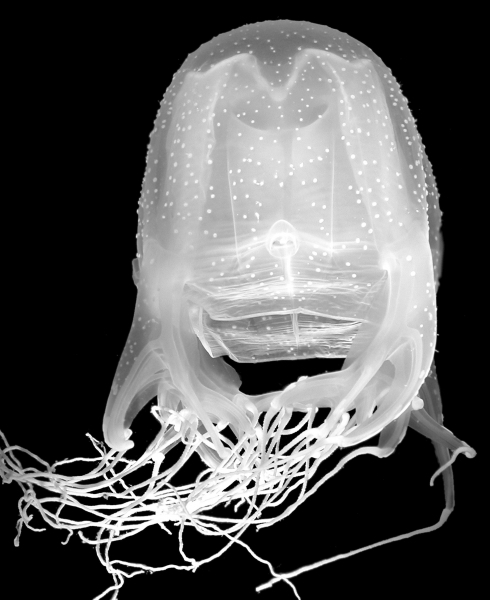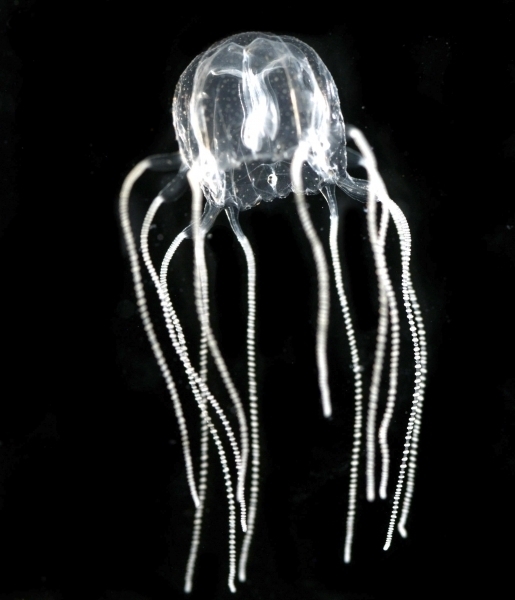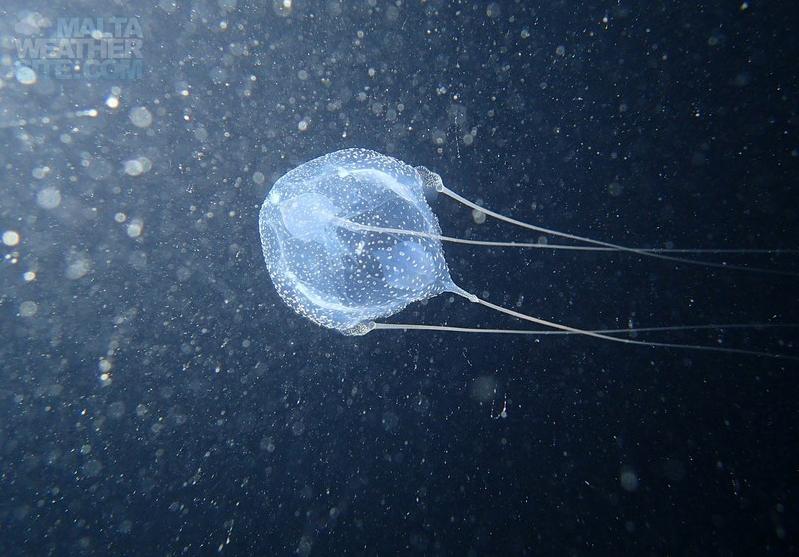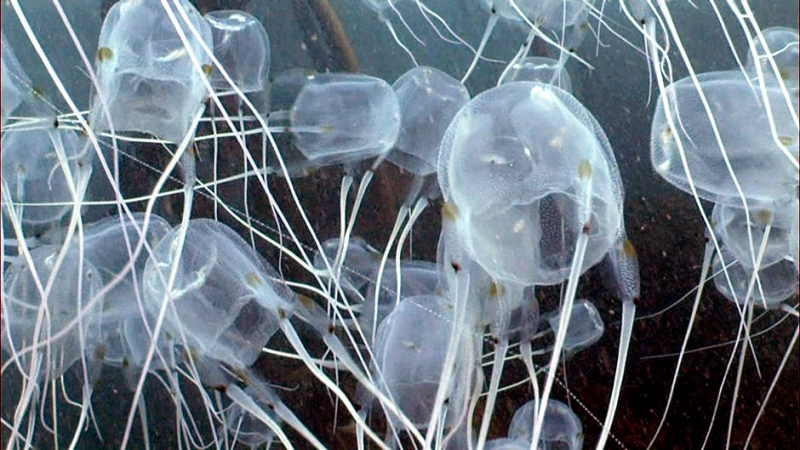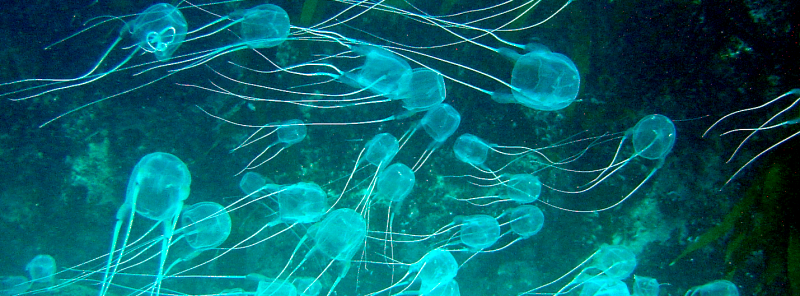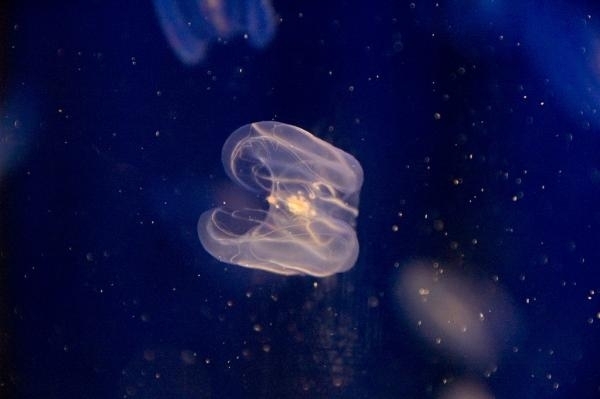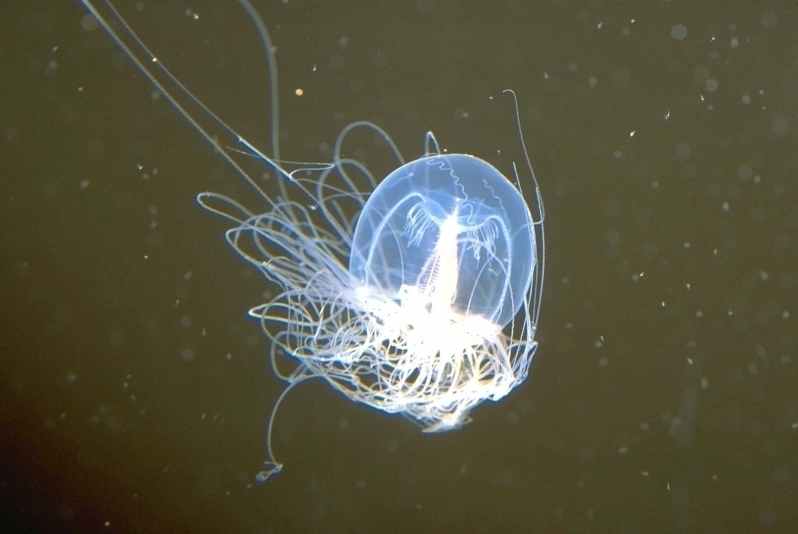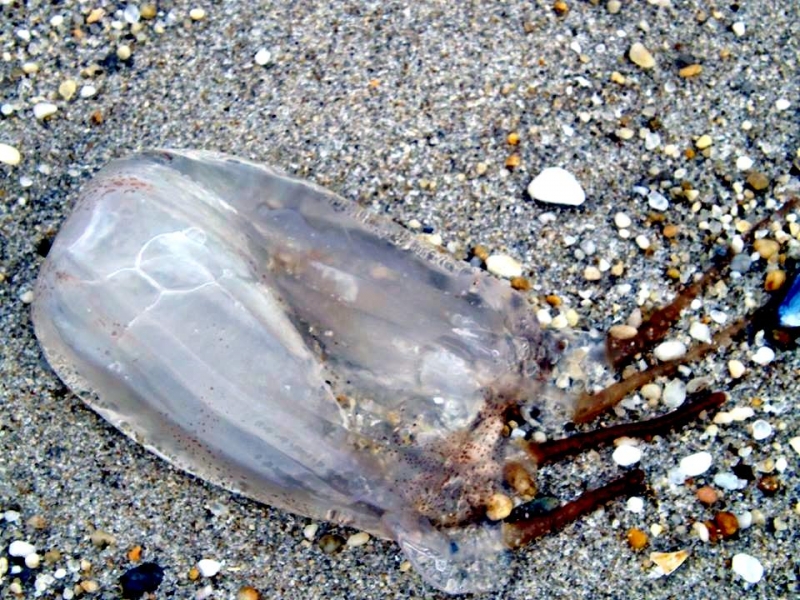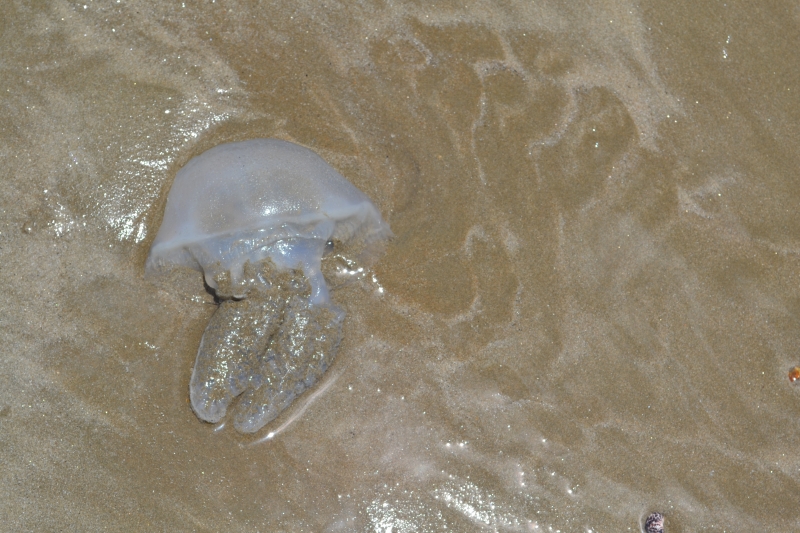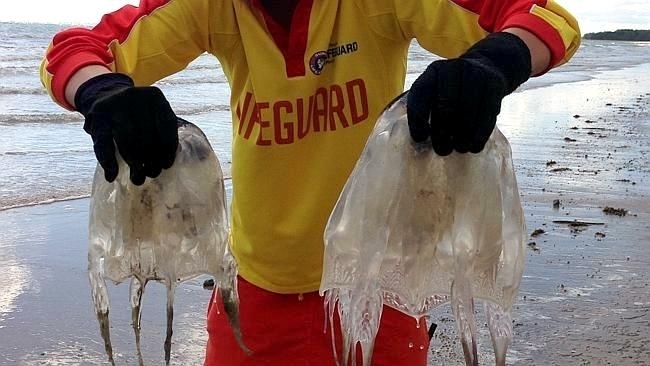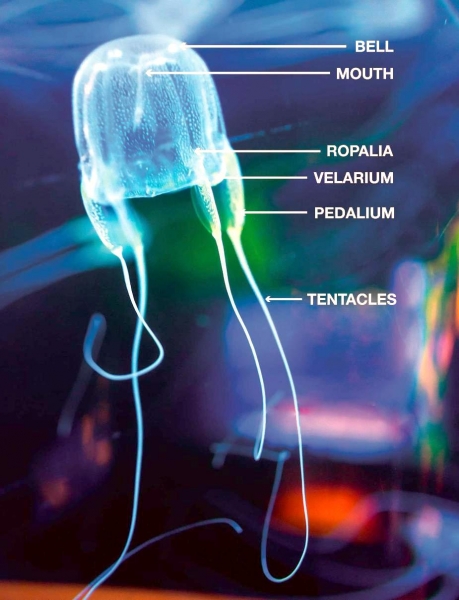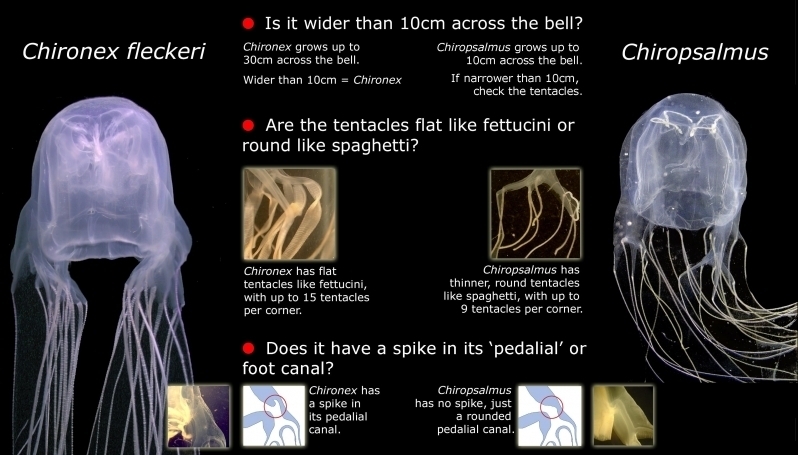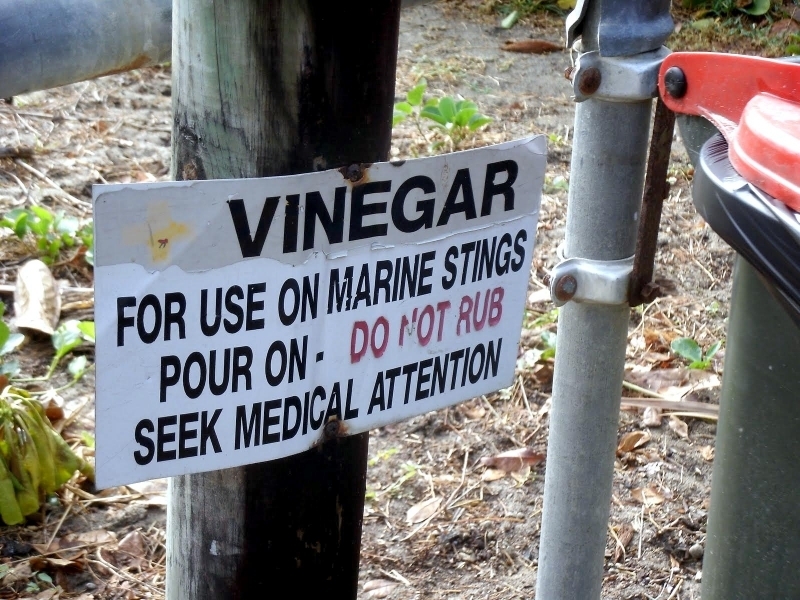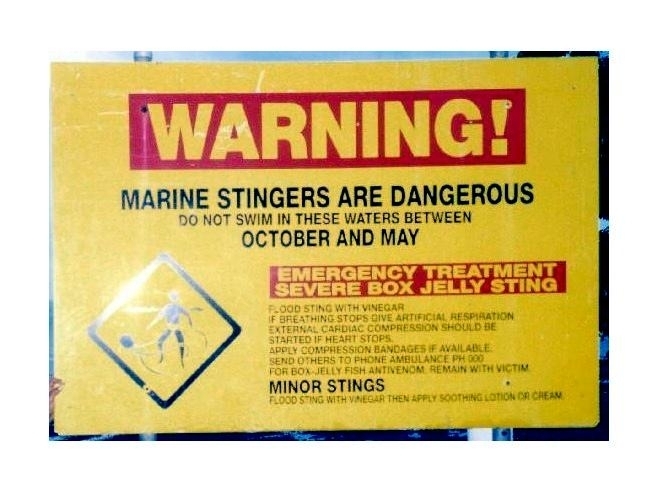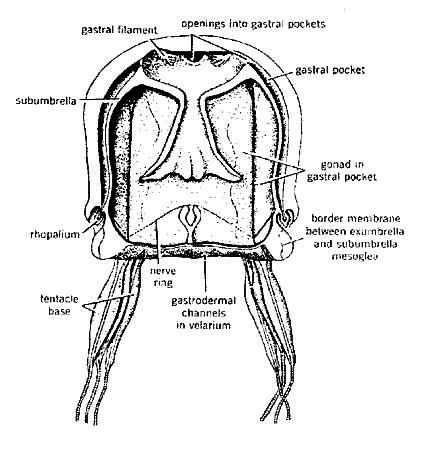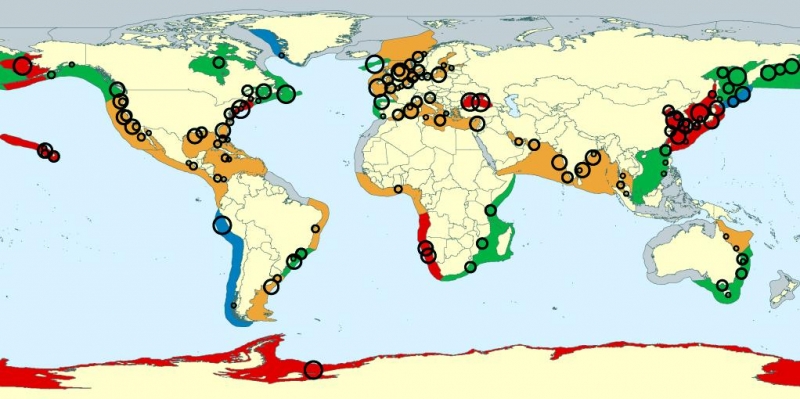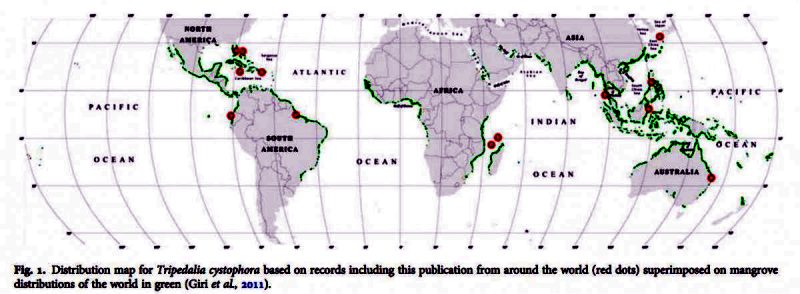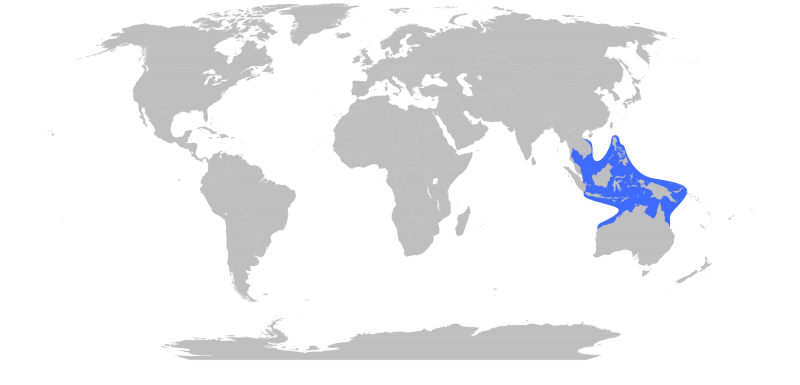“Chironex fleckeri”
Right from the start, the proper scientific name for these animals is “Sea Jelly” not “Jellyfish”. They are invertebrates and not a fish nor do they have a backbone. The Box Sea Jelly commonly known as the “Sea Wasp”, is the most dangerous of all sea jellies and considered to be the most dangerous creature in the world. This species is pale blue in color, posing a danger to swimmers since its transparency makes it difficult to see in the water. The Box Sea Jelly lives in and around the waters of Australia and Southeast Asia. They inhabit parts of the Indian Ocean, Pacific Ocean and the Great Barrier Reef. Box Sea Jellies have been found in the waters on the western coast of Australia in the Exmouth Gulf to Gladstone in the northern waters of Australia. Humans are frequently stung by this species in the oceanic waters of Queensland on Australia’s eastern coast. They may also be responsible for stings near the Philippines. Found in the coastal areas of Northern Australia, Africa, the Gulf of Mexico (near Texas), South-Eastern Asia and adjacent areas of the tropical Indo-west Pacific and just recently, around the Hawaiian Islands. The Box Sea Jelly is one of the simplest organisms. The bi-radially symmetrical body has well-developed tissues & specialized cells. The outer covering of ectoderm made of milky slime substance and an inner layer of endoderm makes it displobastic. It has an organic exoskeleton & hydro-static skeleton and it is an encephalized organism with a non-cellular mesoglea separating the 2 layers and spreading to a vast bulk of its body which aids its buoyancy. With only a single opening (the mouth and entrance to the cavity), the body encompasses a single sac-like body space called the Gastro-vascular. The edge of the umbrella turns inwards forming a circular shaped structure called Velarium. It possesses 4 dark spots (primitive eyes) that are sensitive to light. These enable it to avoid colluding with foreign objects, detection of foods and orientation for swimming. It has a simple but well-developed & sophisticated nervous and sensory systems but no specialized excretory respiratory & circulatory organs since most of its living cells are in direct contact with the water. The name Box Sea Jelly is derived from the shape of their bell, which is box-shaped when healthy. The bell is transparent and is usually between 16 & 24 centimeters, though some reach a diameter of 35 centimeters but can grow to be as big as a baseball. The tentacles of Box Sea Jelly dangle from the corners of the bell known as the pedalia. There can be as many as 15 tentacles hanging from each of the 4 pedalia for a total of up to 60 tentacles per jelly. Each of the tentacles has a slight blue-gray tint and can grow up 3 meters in length. Each tentacle contains millions of nematocysts, which are microscopic hooks where venom is held & delivered. Box Sea Jellies contain sensory organs including 24 eyes, but they do not have a brain.
Box Sea Jellies tend to inhabit shallow, murky saline waters near Australia. They are mainly found in the ocean but are also found inland in freshwater rivers & mangrove channels during spawning. During heavy storms, they move into deeper waters where the water is calm to avoid damage. Box Sea Jellies also inhabit shallow rivers during the reproductive season and during their polyp stage. Once young jellies mature into medusa, they follow the river out to sea. Adult Box Sea Jellies tend to feed in shallow waters, mainly on small fish & prawns. Until they are fully grown, they feed primarily on shrimp. Box Sea Jellies rely on their venomous tentacles to capture their prey. The millions of nematocysts on their tentacles enable them to deliver lethal dose of venom to their prey, immobilizing or killing them in a short amount of time. Because each nematocyst is so small and releases only a minute amount of venom, Box Sea Jellies discharge as many of its nematocysts as possible. Once the tentacles capture the prey, they bring it in closer to their bell and other tentacles, allowing use of nematocysts from other tentacles to more quickly immobilize & kill the prey. Green Turtles prey upon Box Sea Jellies, but are not their primary source of food. Because they have no brain, it is difficult to define their communication & perception. Box Sea Jellies do have eyes, which have photo-receptors. Photoreceptors give the animal the ability to detect light from dark, but it is uncertain whether this species can process shapes. They are however, are attracted to light and tend to avoid darker shapes. Box Sea Jellies can also detect vibrations, which is thought to be useful for finding prey and avoiding predators.
Box Sea Jellies do communicate with one another, it is most likely through chemical signals. After the reproduction of sexually mature medusa, Box Sea Jellies develop planulae, cells grouped together after fertilization. Planulae soon develop into polyps, which are sessile & small (1 to 2 millimeters) and look like a living ball with 2 tentacles. Polyps use their 2 tentacles to attach to a hard surface, such as a stone or the shell of other animals. Polyps usually attach themselves to a surface where they are not exposed, often on the underside or a crevice of the hard surface. Polyps rely on schools of plankton for food. A polyp can reproduce asexually via budding. After a polyp has metamorphosed into a small medusa, it travels from freshwater rivers to the sea. Once in the sea, a maturing Box Sea Jelly continues to grow until it reaches its full size of 16 to 24 centimeters. Because Box Sea Jellies die shortly after spawning, their lifespan is thought to be under a year. The longest lived Box in captivity survived 9 months. Until the invention of a modified tank in the 1990’s, it was near impossible to keep Box Sea Jellies alive in captivity for more than a few days. Water is in constant motion in new tanks, allowing Box Sea Jellies to float in the current without being caught in the corners of the tank. They find mates by swimming to freshwater rivers during the spring and release their sperm & eggs directly into the water where they die after spawning. Once fertilization occurs, planula attach to a hard surface & develop into a small polyp, which may asexually reproduce via budding. Once the polyp has finished budding, it develops into a juvenile medusa which grows into a sexually mature medusa.
